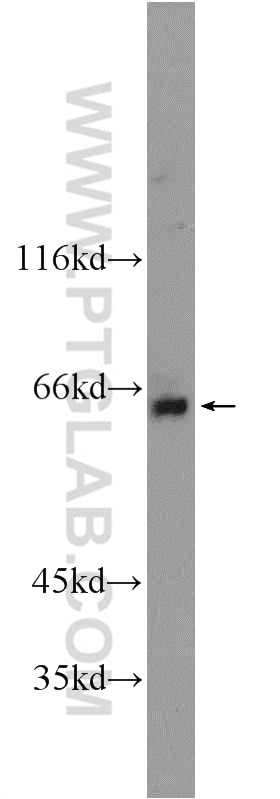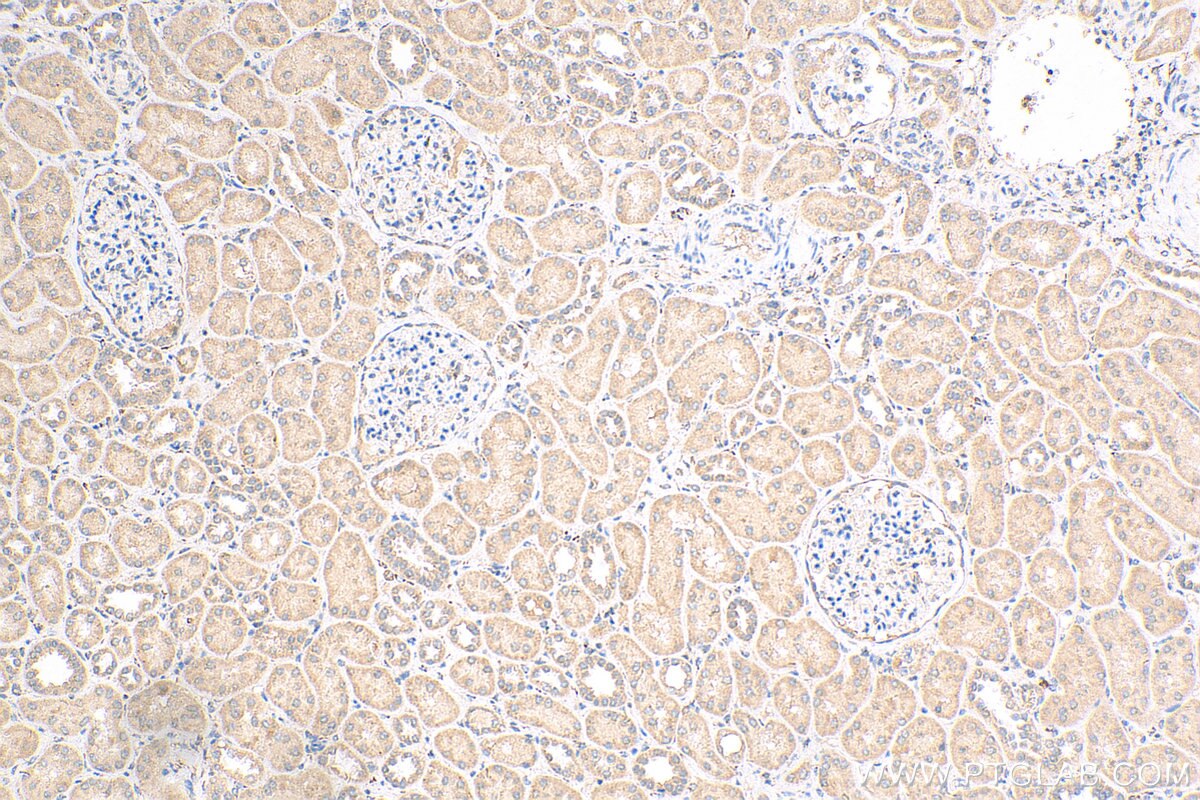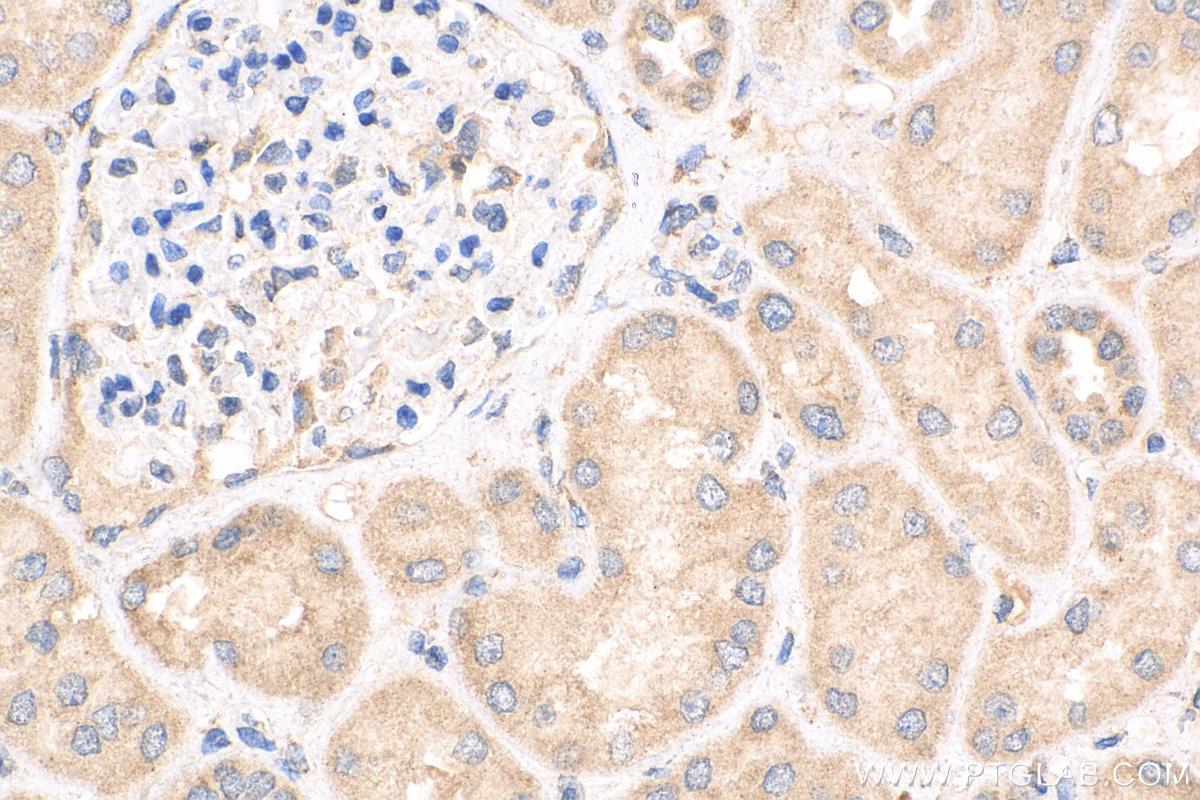Tested Applications
| Positive WB detected in | mouse testis tissue |
| Positive IHC detected in | human kidney tissue Note: suggested antigen retrieval with TE buffer pH 9.0; (*) Alternatively, antigen retrieval may be performed with citrate buffer pH 6.0 |
Recommended dilution
| Application | Dilution |
|---|---|
| Western Blot (WB) | WB : 1:200-1:1000 |
| Immunohistochemistry (IHC) | IHC : 1:50-1:500 |
| It is recommended that this reagent should be titrated in each testing system to obtain optimal results. | |
| Sample-dependent, Check data in validation data gallery. | |
Product Information
24733-1-AP targets BTBD16 in WB, IHC, ELISA applications and shows reactivity with human, mouse samples.
| Tested Reactivity | human, mouse |
| Host / Isotype | Rabbit / IgG |
| Class | Polyclonal |
| Type | Antibody |
| Immunogen |
CatNo: Ag20672 Product name: Recombinant human BTBD16 protein Source: e coli.-derived, PET28a Tag: 6*His Domain: 158-506 aa of BC109262 Sequence: KVAFATALKNLYMSEVEINLEDLLGVLASAHILQFSGLFQRCVDVMIARLKPSTIKKFYEAGCKYKEEQLTTGCEKWLEMNLVPLGGTQIHLHKIPQDLLHKVLKSPRLFTFSEFHLLKTMLLWVFLQLNYKIQAIPTYETVMTFFKSFPENCCFLDRDIGRSLRPLFLCLRLHGITKGKDLEVLRHLNFFPESWLDQVTVNHYHALENGGDMVHLKDLNTQAVRFGLLFNQENTTYSKTIALYGFFFKIKGLKHDTTSYSFYMQRIKHTDLESPSAVYEHNHVSLRAARLVKYEIRAEALVDGKWQEFRTNQIKQKFGLTTSSCKSHTLKIQTVGIPIYVSFAFIFPA Predict reactive species |
| Full Name | BTB (POZ) domain containing 16 |
| Calculated Molecular Weight | 507 aa, 59 kDa |
| Observed Molecular Weight | 60 kDa |
| GenBank Accession Number | BC109262 |
| Gene Symbol | BTBD16 |
| Gene ID (NCBI) | 118663 |
| RRID | AB_2879696 |
| Conjugate | Unconjugated |
| Form | Liquid |
| Purification Method | Antigen affinity purification |
| UNIPROT ID | Q32M84 |
| Storage Buffer | PBS with 0.02% sodium azide and 50% glycerol, pH 7.3. |
| Storage Conditions | Store at -20°C. Stable for one year after shipment. Aliquoting is unnecessary for -20oC storage. 20ul sizes contain 0.1% BSA. |
Background Information
BTBD16 also named as BTB (POZ) domain containing 16 or C10orf87 is 506 amino acid protein, which one BTB domain. The molecular weight fo BTBD16 is 58kDa. The function of BTBD16 protein is still non-known.
Protocols
| Product Specific Protocols | |
|---|---|
| IHC protocol for BTBD16 antibody 24733-1-AP | Download protocol |
| WB protocol for BTBD16 antibody 24733-1-AP | Download protocol |
| Standard Protocols | |
|---|---|
| Click here to view our Standard Protocols |








